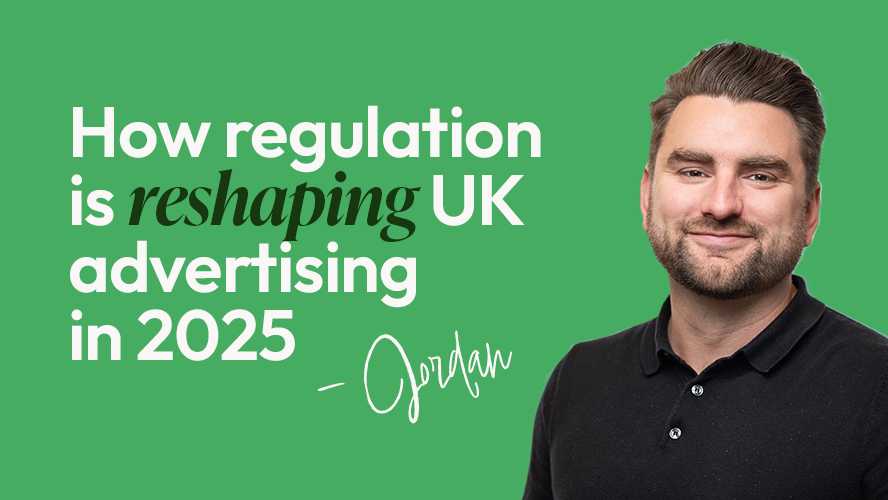
Back

October 21, 2025
The New Rules: Junk Food Advertising Gets Squeezed
From October 2025, the UK government’s long-awaited restrictions on HFSS advertising come into full force. The legislation bans unhealthy food and drink ads on TV before 9 p.m. and introduces significant limitations on paid digital advertising.
For brands like Coca-Cola, McDonald’s, and Mondelez, the writing’s been on the wall for a while - prompting a £420 million surge in pre-deadline ad spend earlier this year. Those final campaigns filled the airwaves as marketers raced to secure last-minute exposure before the shutters came down.
But this isn’t just a challenge for FMCG giants.
Agencies managing creative, media, or influencer activity for food, drink, or snack clients will now have to navigate a maze of new compliance standards, including:
- Stricter targeting and data requirements for digital campaigns.
- Restrictions on imagery, product placement, and audience segmentation.
- Increased scrutiny from regulators and consumer advocacy groups.
For creative teams, this means reframing brand storytelling — not as “restriction”, but as an opportunity to emphasise wellbeing, quality, and positive brand values.
The Ad-Tech Curveball: Patent Lawsuits Hit Publishers
As if that wasn’t enough, October also brought a new challenge from an unlikely direction — the courtroom.
A US-based company, Rich Media Club LLC, has launched a series of patent infringement lawsuits targeting some of the UK’s biggest publishers, including The Guardian and The Telegraph, over common online advertising technologies such as ad refreshing and lazy loading.
While these lawsuits may seem technical or distant, they carry major implications for the ad-tech supply chain. If publishers and their vendors face higher costs or limitations on the technologies they can use, advertisers will feel the knock-on effects:
- Reduced inventory or higher CPMs as publishers pass costs downstream.
- Disrupted measurement and attribution tools, as some tracking methods become legally sensitive.
- Increased pressure on agencies to prove transparency and compliance in their buying models.
In short, regulation and litigation are now shaping media performance as much as algorithms and creative strategy.
What This Means for Marketers and Agencies
Taken together, these shifts reflect a broader truth: the era of low-regulation, high-scale digital advertising is over.
Marketing strategies are entering a more complex, compliance-first phase — where data, technology, and creative must all work within new legal and ethical boundaries.
For agencies, that brings both challenge and opportunity:
1. Compliance as a Differentiator
Agencies that can help clients navigate compliance - from HFSS ad rules to data protection and intellectual property - will earn trust and long-term partnerships.
Consider building a “regulatory readiness” checklist or integrating legal collaboration earlier in campaign planning.
2. Diversify Media Strategies
With traditional broadcast and digital HFSS inventory restricted, alternative channels - such as experiential, content partnerships, retail media, and earned PR - will gain new value. Creativity in placement will become as important as creativity in message.
3. Future-Proof Your Tech Stack
Audit your media and measurement partners. Ensure that the tools and platforms you’re using are compliant, defensible, and flexible. A proactive conversation now could prevent costly campaign disruption later.
4. Re-frame Brand Storytelling
The shift in regulation offers a moment to redefine brand purpose. Campaigns that emphasise health, sustainability, or social responsibility aren’t just compliant - they’re culturally aligned with what consumers want from brands in 2025.
A Changing Landscape - and a Chance to Lead
While these changes feel disruptive, they also underscore marketing’s evolution into a more responsible, sustainable, and strategically disciplined industry.
For agencies in The GO! Network, this moment is an opportunity to demonstrate leadership - showing brands that compliance and creativity don’t need to conflict. Instead, they can coexist as two sides of a smarter, more future-ready marketing model.
Key Takeaway:
Regulation and technology are converging faster than ever. Agencies that treat compliance as part of creativity - not a barrier to it - will be the ones setting the pace in 2026 and beyond.
Thanks for your enquiry
A member of our team will be in touch to confirm the call.
We look forward to exploring potential partnerships with you.


%2520(1).png)

.png)
